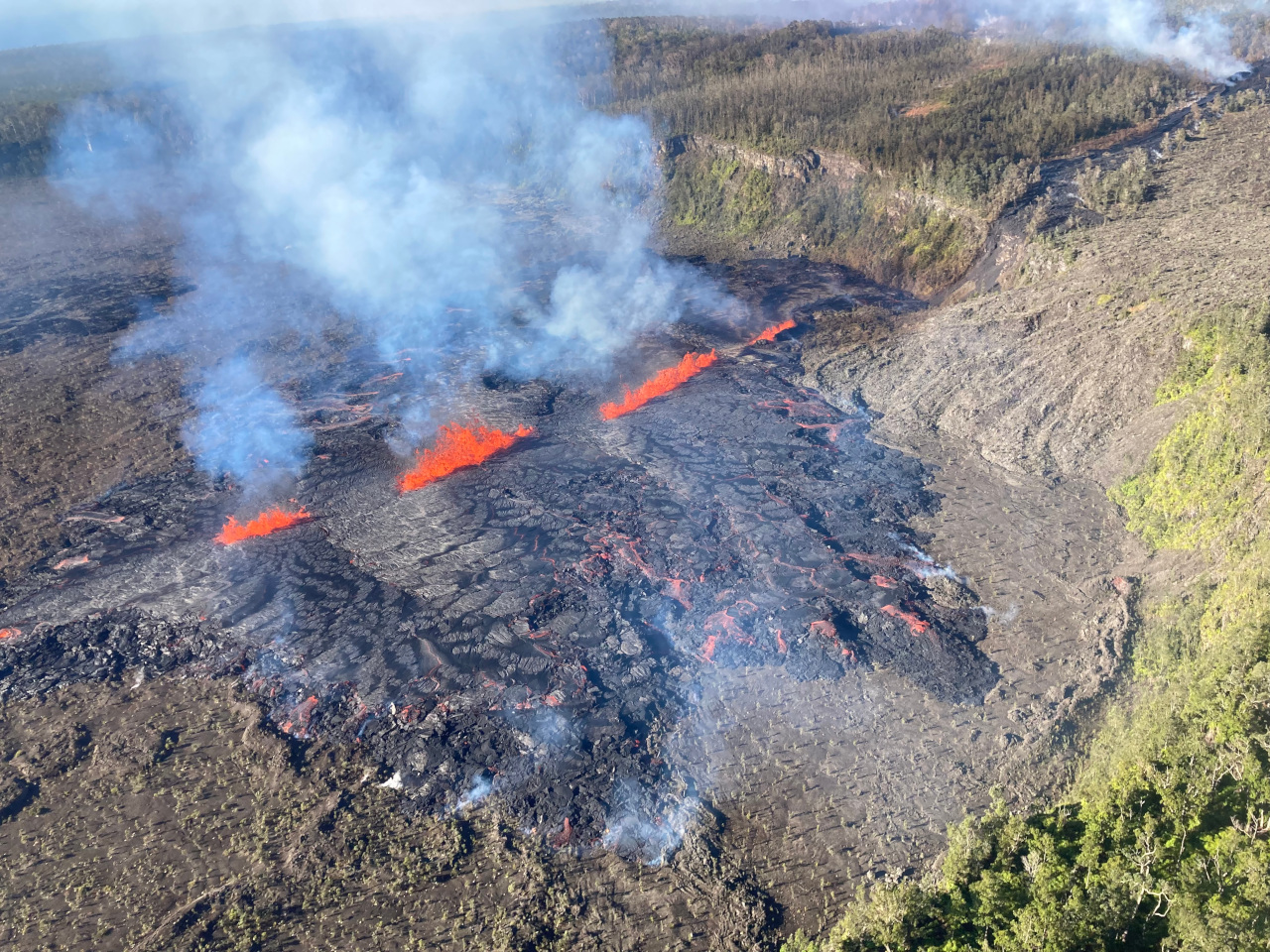
USGS: “This photograph of Kīlauea’s ongoing middle East Rift Zone eruption was captured during a Hawaiian Volcano Observatory helicopter overflight during the morning of September 17, 2024. Geologists observed fountaining eruptive fissures and active lava flows on the floor of Nāpau Crater, just downrift (northeast) of the September 15 eruptive fissure. This south-facing view shows the current activity from the north side of Nāpau Crater.” (USGS photo by A. Ellis)
(BIVN) – Active fissures are generating lava flows that are covering the floor of Nāpau Crater on Tuesday morning, as the new eruption on the middle East Rift Zone of Kīlauea volcano has entered a third phase of activity.
The USGS Volcano Alert Level for Kīlauea remains at WATCH, with an Aviation Color Code of ORANGE.
In a morning update, the USGS Hawaiian Volcano Observatory explained how the new eruption – which began late Sunday night – has entered into a third, more vigorous phase of activity.
From the USGS HVO update posted on Tuesday morning:
Activity Summary: Kīlauea volcano is erupting in Hawai’i Volcanoes National Park from a new fissure vent that opened within Nāpau Crater this morning between 4:00 and 5:00 AM HST. Current eruptive activity began with a small eruption that occurred on the evening September 15 from a fissure located just west of Nāpau Crater and lasted a few hours. A second phase of the eruption began at approximately 6:00 PM last night. Activity decreased overnight until approximately 4:00 AM this morning, when a third phase of the eruption began. The eruption is occurring within a closed and remote area of Hawaiʻi Volcanoes National Park. There is no immediate threat to life or infrastructure. Chain of Craters Road, which is closed, is located far downslope and downwind of the eruption. Residents of nearby subdivisions may experience volcanic gas emissions related to this activity which may increase and decrease over the coming hours and days. The Volcano Alert Level/Aviation Color Code remains at WATCH/ORANGE. No changes have been detected in the lower East Rift Zone or Southwest Rift Zone.
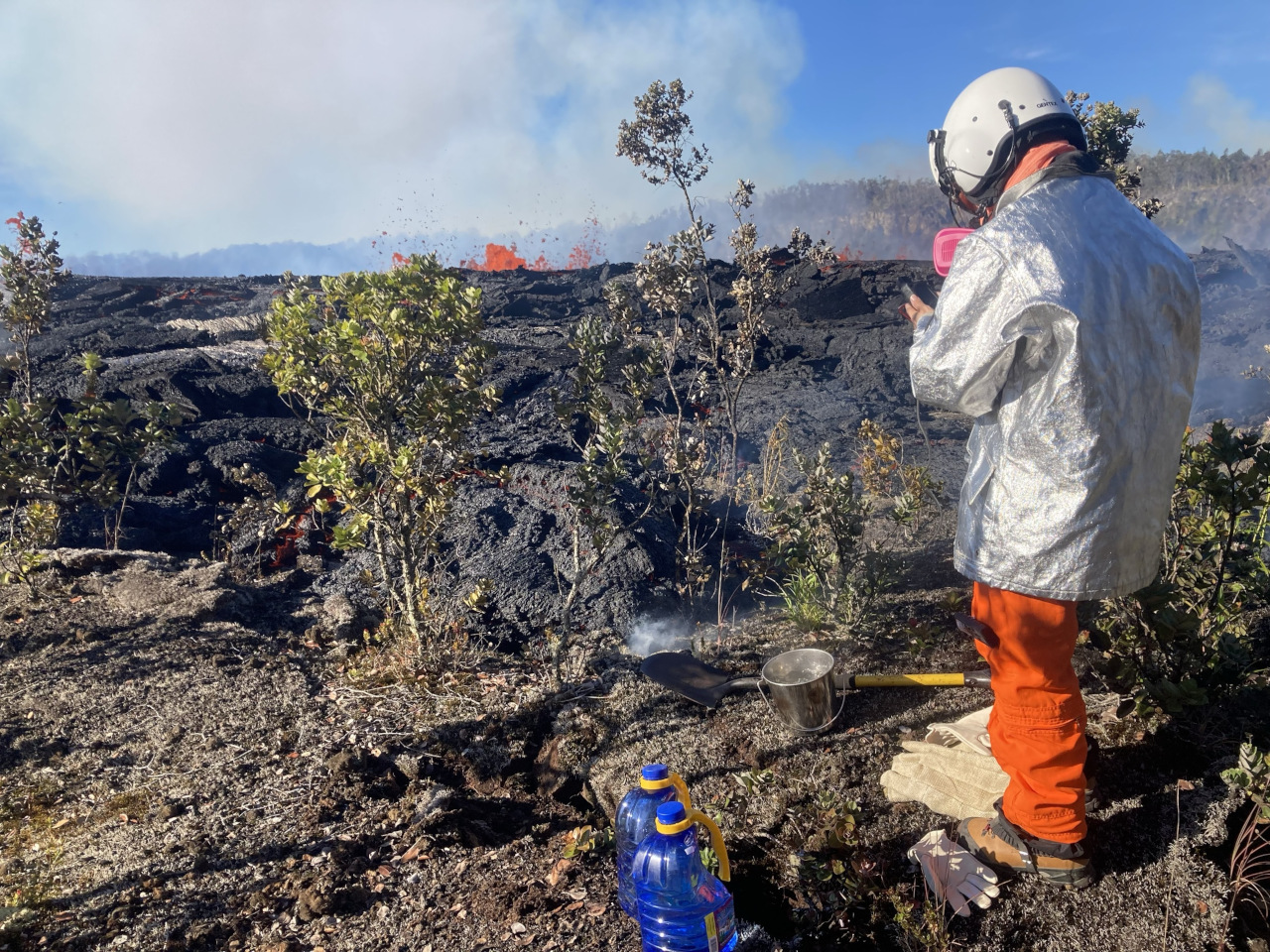
USGS: “USGS Hawaiian Volcano Observatory geologists collected a sample of the middle East Rift Zone Kīlauea eruption in Nāpau Crater, within a closed area Hawaiʻi Volcanoes National Park. Geologists put molten lava into a metal bucket and rapidly quench it with water. The fast quench is needed to preserve the geochemistry of the fresh sample and prevent changes that would result from the formation of crystals during slow cooling. The samples will be taken to the lab for analysis, providing scientists with information about conditions in the magma chamber and magma’s path to the surface.” (USGS video by A. Ellis)
Summit Observations: Approximately 17 earthquakes were detected beneath the Kīlauea summit region over the past 24 hours, at depths of 1–3 km (0.6–1.9 mi) below the ground surface, and with magnitudes of M2 or less. Summit tiltmeters (UWE, SDH, and IKI, to the northwest, southwest, and east of the summit respectively) continued recording deflationary tilt throughout the day yesterday, with UWE recording approximately 10 microradians of tilt in the last 24 hours. This pattern is consistent with magma leaving the summit storage chambers and transferring to the middle East Rift Zone. The most recent measurement of SO2 emission rate at the summit was 75 tonnes per day on August 20, 2024.
Rift Zone Observations: This morning, several lava fountains approximately ten meters (yards) high are generating lava flows on the floor of Nāpau Crater. This fissure system opened between 4:00 and 5:00 AM HST this morning as detected by NOAA GOES satellite thermal data and USGS Hawaiian Volcano Obseratory (HVO) infrasound, seismic, and camera instruments. Currently, the fissure system in Nāpau is about 0.5 km long (.3 mi) and cuts east-west across the northern crater floor. The fissure appears to have opened just west of Nāpau early this morning and propagated eastward as the eruption progressed. As of 8:30 AM, approximately 25-30% of Nāpau Crater floor has been covered by lava, which is confined to the crater.
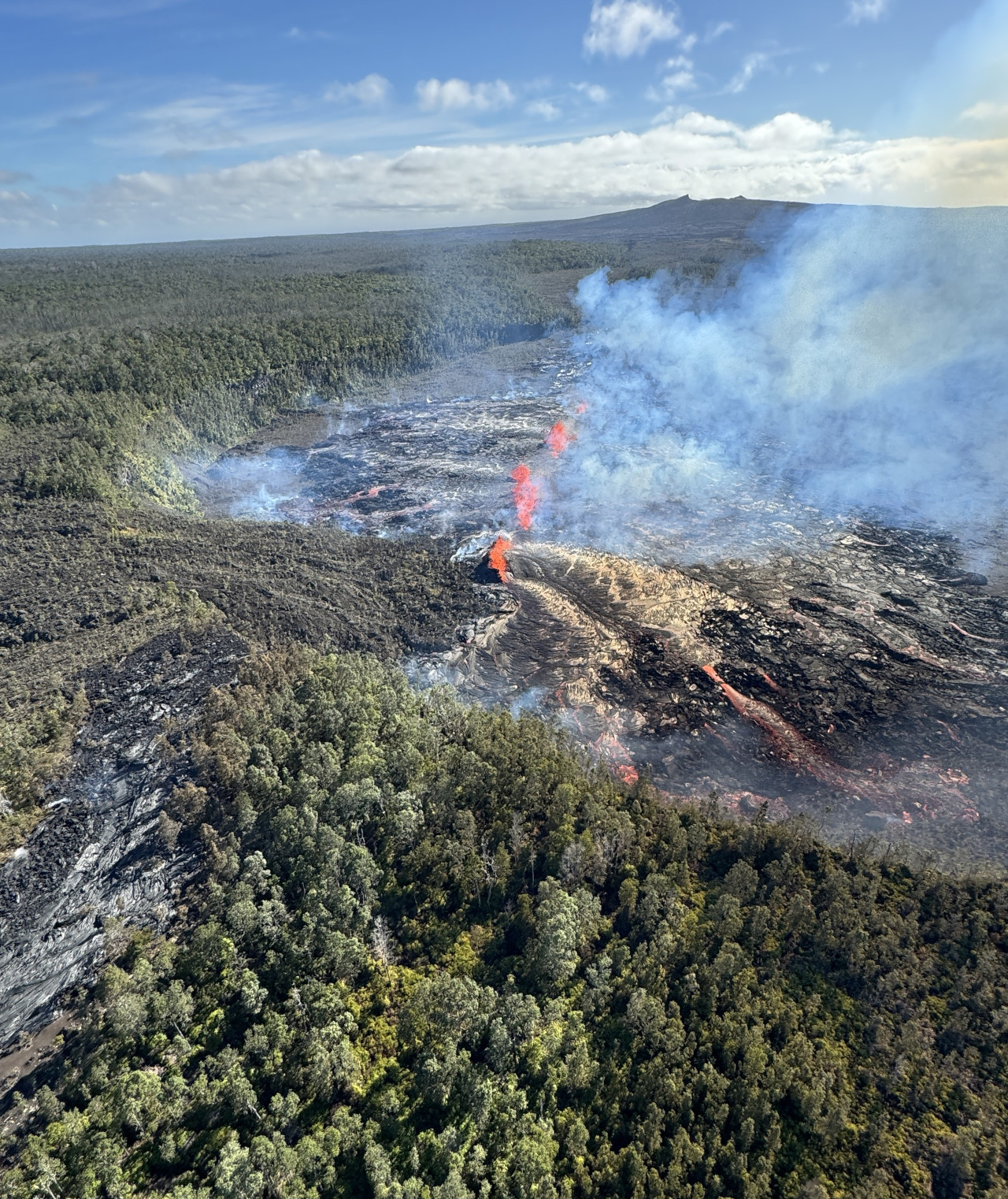
USGS: “This photograph of Kīlauea’s ongoing middle East Rift Zone eruption was captured during a Hawaiian Volcano Observatory helicopter overflight during the morning of September 17, 2024. Geologists observed fountaining eruptive fissures and active lava flows bisecting the floor of Nāpau Crater, just downrift (northeast) of the September 15 eruptive fissure. This west-facing view shows the current activity from the east side of the crater.” (USGS photo by A. Ellis)
This eruption sequence was preceded by intense and localized earthquakes between Maunaulu and Makaopuhi Crater and accompanied by ground deformation patterns indicative of shallow underground crack growth or dike intrusion (a magma filled near vertical crack) began at approximately 6 PM HST on September 14, 2024. In the following hours, the intensity of earthquake activity decreased, but over 340 shallow earthquakes were detected in the vicinity of the intrusion during the next 24 hours, most within 1 km – 5 km (0.6 mi – 3.1 mi) of the surface. Seismic and deformation data showed that magma was moving beneath the ground from summit storage chambers to the area between Maunaulu and Makaopuhi Crater.
The initial phase of the eruption started on September 15 around 9:00 PM HST and continued until approximately 10:00 PM. Heavy rainfall hampered visibility of the region, but USGS HVO infrasound instruments and seismometers detected a signal typical of gas or steam venting in the middle East Rift Zone and USGS HVO issued a VAN/VONA raising the alert level to Watch/Orange. A helicopter overflight on the morning of September 16 identified several new but inactive fissure segments 480 meters (yards) in total length with small pads of lava extending up to 90 meters (yards) from the fissures. Measurement of sulfur dioxide emission rates along Chain of Craters road downwind of the eruption site during the day of September 16 indicated that the inactive fissure system was emitting around 300 metric tonnes a day.
The second phase of the eruption began on September 16 between 6:00 and 7:00 PM HST. This eruptive pulse began with no associated geophysical signals. No changes in seismicity, infrasound, or tilt were observed. It was detected by NOAA GOES satellite thermal imagery and HVO webcam imagery. Eruptive activity gradually decreased throughout the night and ended by the early morning hours of September 17 prior to the onset of the more vigorous third phase that began between 4:00 and 5:00 AM.
All activity is currently confined to the middle East Rift Zone between Makaopuhi Crater and Puʻuʻōʻō and there are no indications further downrift in the MERZ or in the LERZ.
Analysis: The ongoing MERZ eruption in the region of Nāpau Crater is the first in that area since the multi-day 1997 Napau fissure eruption. The eruption is currently in its third phase of vent opening and lava production. Multi-day fissure eruptions are not unusual and at this time it is difficult to say how long the eruptive activity may continue. Currently, summit deflation recorded by both the Uēkahuna (UWE) and Sandhill (SDH) tiltmeters indicate a constant transfer of magma from the summit to the eruption site. As long as magma is being supplied to the MERZ, the eruptive activity is likely to continue.
Chain of Craters Road in Hawaiʻi Volcanoes National Park is closed to all use due to ongoing eruptive activity. Escape Road is also closed south of Nāhuku lava tube.
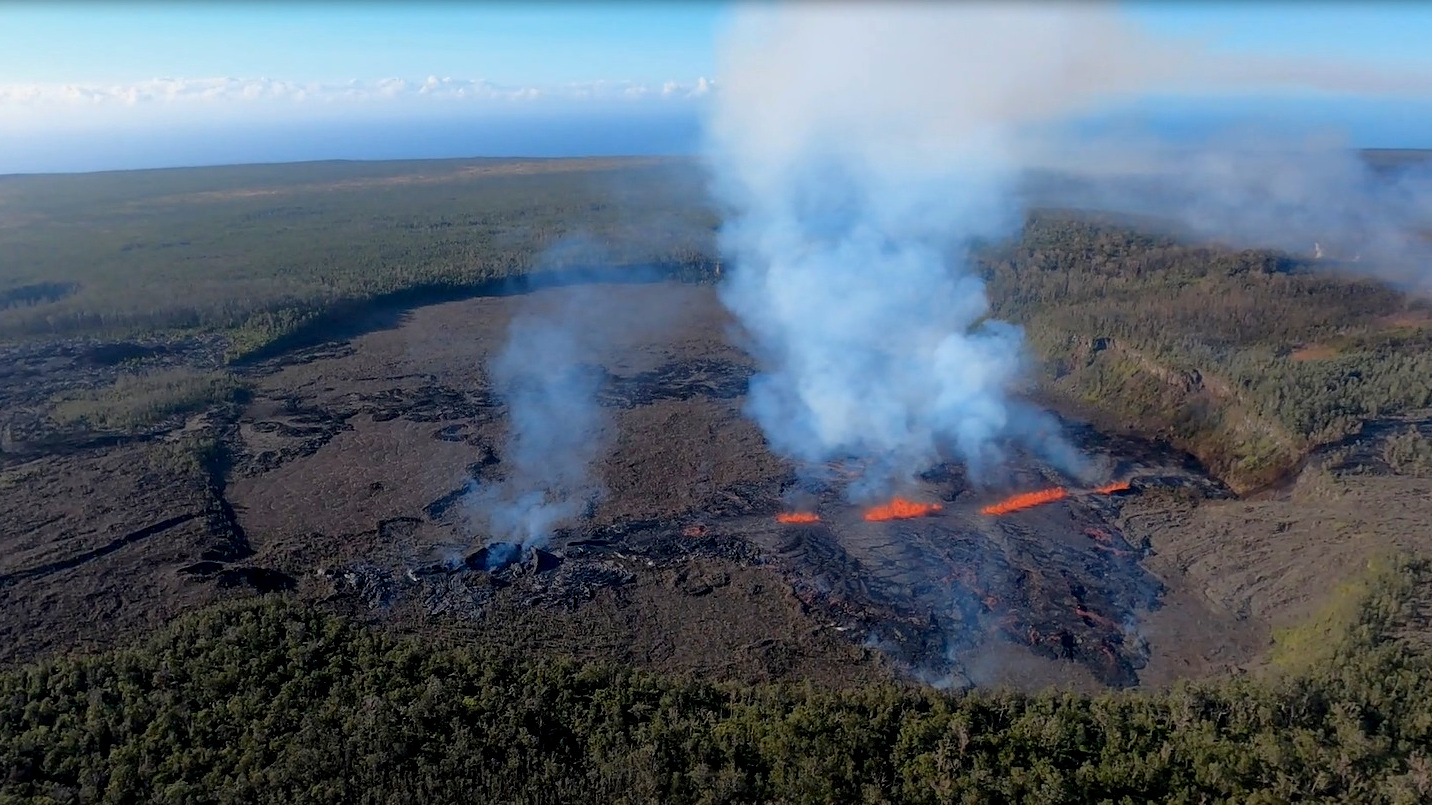
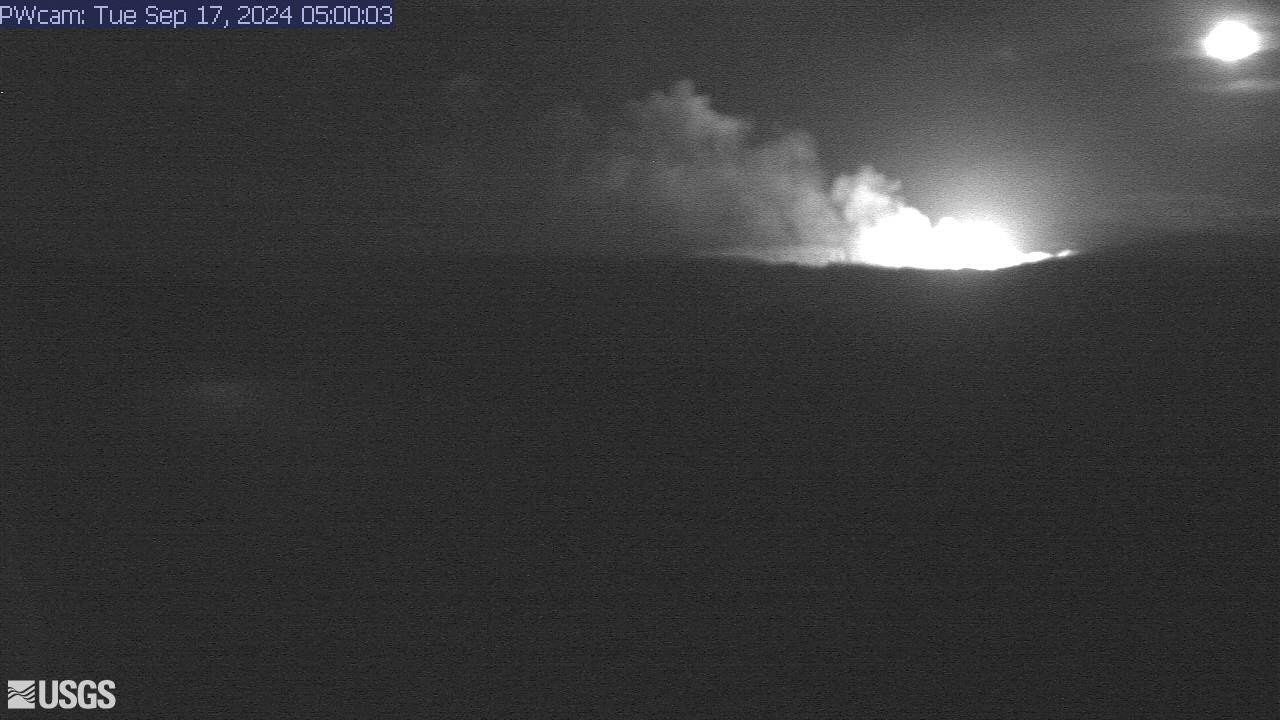

by Big Island Video News11:06 am
on at
STORY SUMMARY
HAWAIʻI VOLCANOES NATIONAL PARK - The eruption on Kīlauea's middle East Rift Zone has entered a third phase, with active fissures erupting lava within Nāpau Crater.